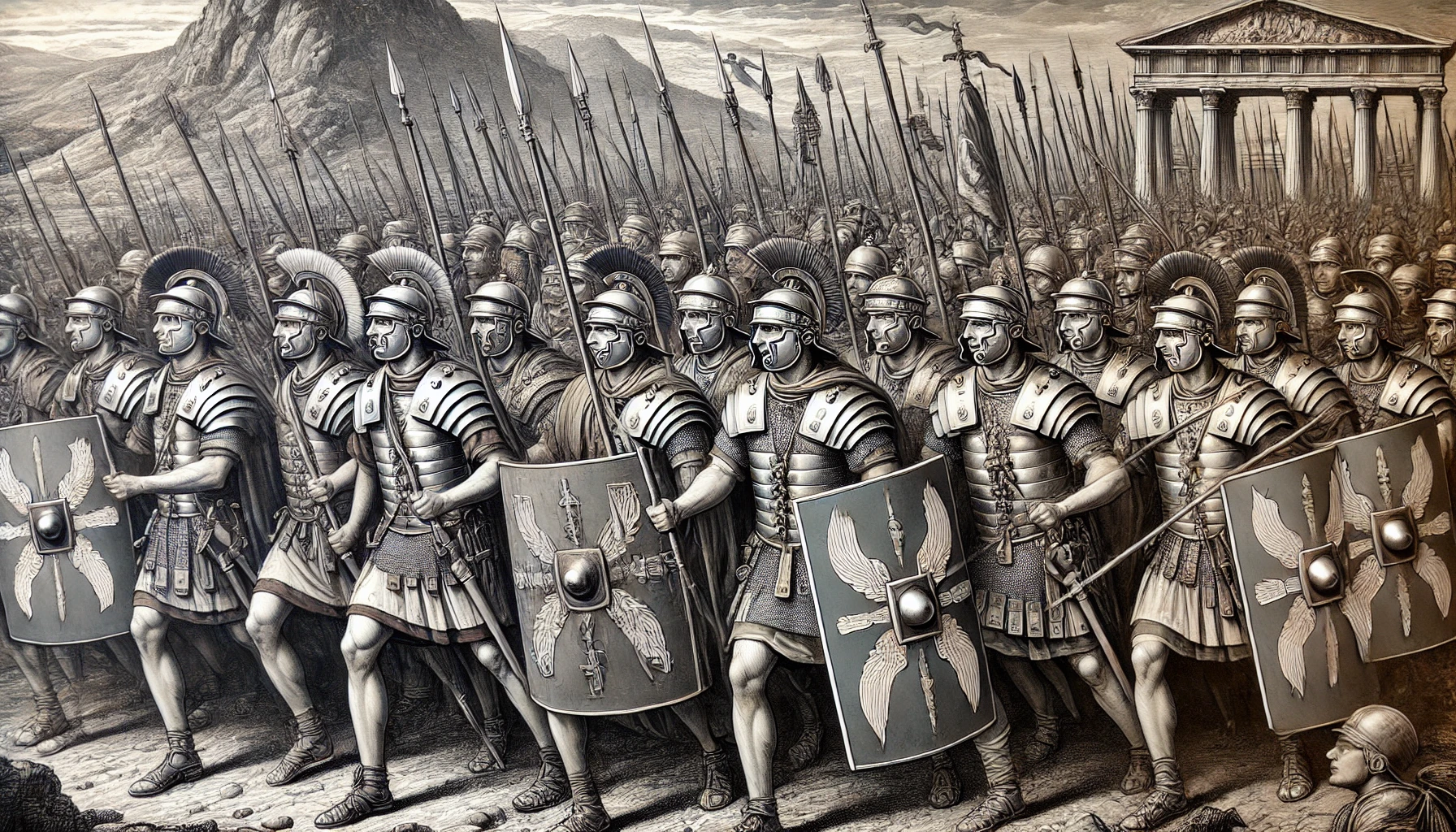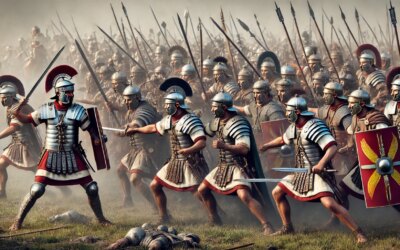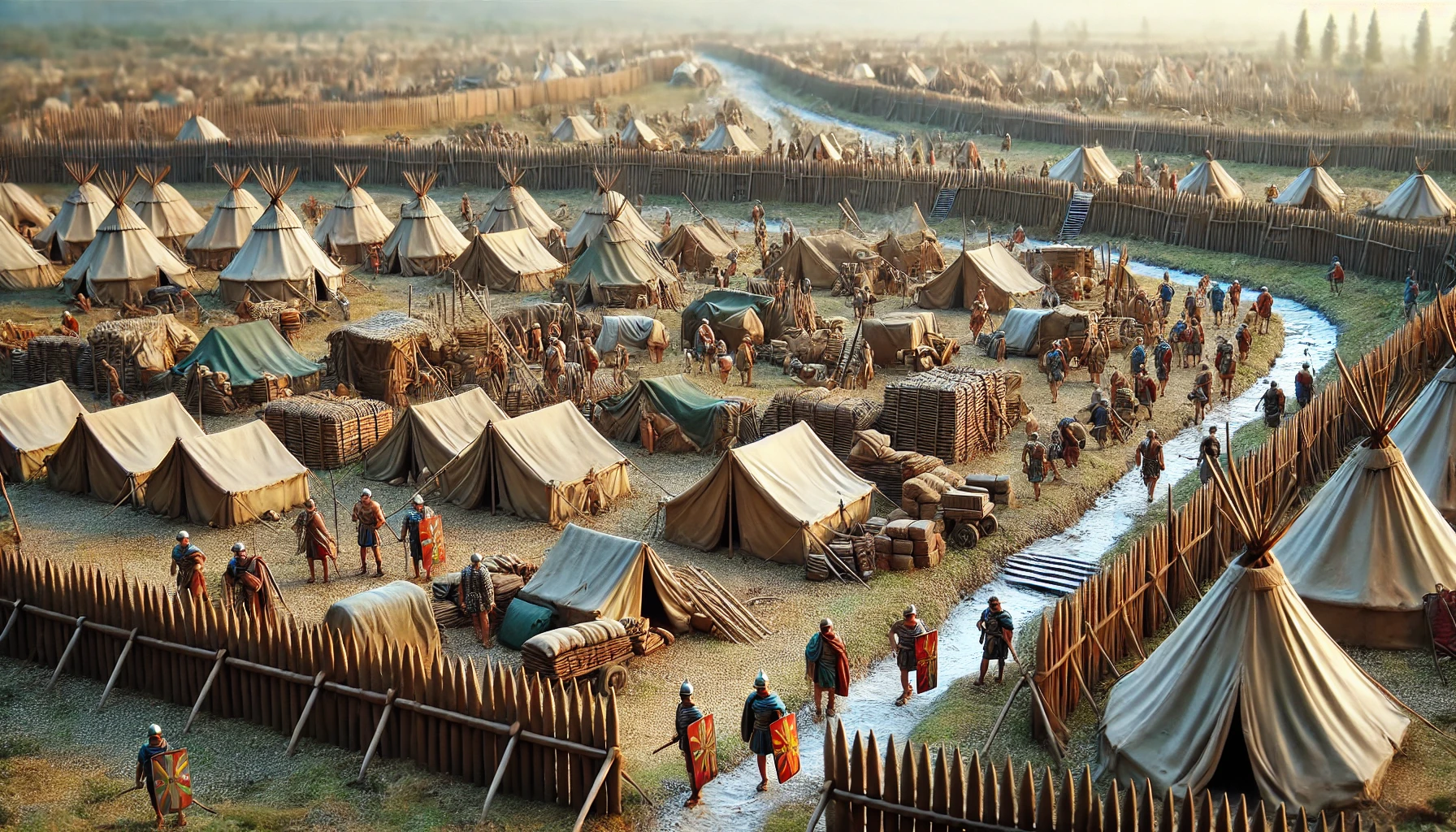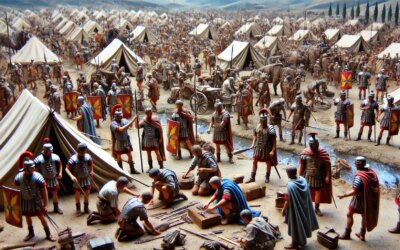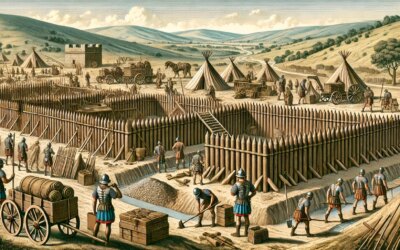Introduction
The Roman legion stands as one of the most iconic and effective military formations in history. Known for their strict discipline, innovative tactics, and unmatched organization, Roman legions were the backbone of Rome’s territorial expansion and the guardians of its empire. From their early days as a citizen militia to their transformation into a professional army, the legions set a standard for military excellence that influenced generations of soldiers and strategists.
Structure and Organization
At the heart of the Roman military machine was its meticulous structure. A typical legion comprised approximately 5,000 men, divided into smaller units called cohorts, each consisting of six centuries. These centuries, led by centurions, were further split into contubernia—groups of eight soldiers who shared living quarters and responsibilities. This hierarchical organization allowed for unparalleled command and control on the battlefield.
The Role of the Centurion
Centurions were the backbone of Roman military leadership. These seasoned officers were chosen for their bravery, discipline, and tactical acumen. They maintained order, enforced strict training regimens, and inspired their men to perform with steadfast determination. The centurion’s distinctive helmet crest and vine staff symbolized both their authority and their vital role in maintaining the cohesion of the legion.
Training and Discipline
Roman soldiers underwent rigorous training that emphasized physical endurance, weapon proficiency, and battlefield maneuvers. Recruits practiced tirelessly with weighted wooden swords and shields to build strength and precision. They were taught to march in step, construct fortified camps, and execute complex formations such as the testudo (tortoise) and the wedge. This relentless preparation ensured that legions could respond swiftly and effectively to any threat.
Standardized Equipment
Another key factor in the legion’s success was the standardization of equipment. Soldiers were equipped with a gladius (short sword), pilum (throwing spear), and a rectangular scutum (shield). Armor, such as the lorica segmentata or chainmail, provided protection without sacrificing mobility. This uniformity allowed the legions to function as a cohesive unit, with each soldier able to step into another’s role if needed.
Battlefield Tactics
Roman battlefield tactics were rooted in flexibility and discipline. The famous triplex acies formation—three lines of infantry arranged in a checkerboard pattern—allowed for a steady rotation of fresh troops into combat. This approach ensured that no single unit bore the brunt of the enemy’s assault for too long.
The Importance of Adaptability
The legions were not confined to a single strategy. Commanders, such as Julius Caesar and Scipio Africanus, tailored their tactics to the specific enemy they faced. Whether countering the mobile cavalry of the Parthians, the phalanxes of the Greeks, or the guerrilla tactics of the Gauls, the legions adapted their formations, weapon usage, and logistical support to maintain their dominance.
The Role of Engineers and Logistics
The success of the Roman military was not limited to combat prowess. Engineers played a vital role in constructing roads, bridges, and fortifications. These structures ensured that supplies, reinforcements, and communication could flow smoothly across vast distances. Roman soldiers, trained in basic engineering, built fortified camps every night, providing security and a base of operations.
Campaigning Efficiency
Legions carried everything they needed—rations, cooking gear, and entrenching tools. This self-sufficiency allowed them to campaign far from home, establishing outposts and supply lines that sustained their operations. The ability to march long distances, construct defensive positions, and maintain a steady supply chain gave the Romans a critical advantage over less organized foes.
Legacy of the Roman Legion
The Roman legion’s impact extended far beyond the ancient world. Their organizational methods influenced later military structures, from medieval knights to modern armed forces. The principles of discipline, standardized training, and tactical flexibility remain core tenets of successful armies today.
Symbol of Roman Power
For centuries, the Roman legion symbolized the might and stability of the empire. Their presence assured order, defended borders, and projected Rome’s influence across the known world. Even as the empire faced internal strife and external threats, the legions remained a symbol of Roman strength and resilience.
Conclusion
The Roman legion was more than just a military unit; it was a testament to the power of organization, discipline, and innovation. By understanding the tactics, structure, and legacy of these formidable forces, we gain insight into the factors that allowed Rome to rise from a small city-state to a global superpower. The lessons of the legions continue to resonate, reminding us of the enduring importance of preparation, unity, and adaptability in the face of challenges.

